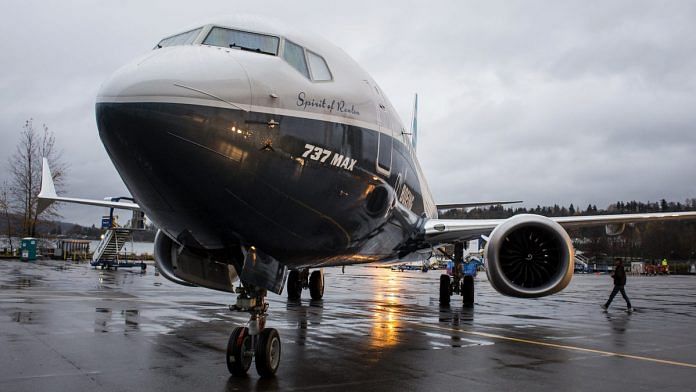Washington/London/Chicago: Tests on Boeing Co.’s grounded 737 Max have revealed a new safety risk unrelated to two fatal crashes that led to the grounding of the aircraft, and U.S. regulators are ordering the company to make additional design changes.
The Federal Aviation Administration discovered that data processing by a flight computer on the jetliner could cause the plane to dive in a way that pilots had difficulty recovering from in simulator tests, according to two people familiar with the finding who asked not to be named discussing it.
“The FAA recently found a potential risk that Boeing must mitigate,” the agency said in an emailed statement on Wednesday. The statement didn’t provide any specifics.
While the issue didn’t involve the Maneuvering Characteristics Augmentation System linked to the two accidents since October that killed 346 people, it could produce an uncommanded dive similar to what occurred in the crashes, according to one person, who wasn’t authorized to speak about the matter.
Also read: Boeing might change name of 737 Max to erase its tarnished image
David Learmount, consulting aviation-safety editor at Flight Global and a former Royal Air Force pilot, said details of the new issue are sketchy but it’s possible that it could further delay the Max’s return.
“The implication is that this is different software in a different control computer that’s presenting similar symptoms,” he said. “When you control an aircraft with computers, which we do now, you’ve always got potential for problems.”
Gordon Johndroe, a Boeing spokesman, said the company agreed with the FAA finding and was addressing the issue as well as a broader software redesign that’s been underway for eight months.
“Addressing this condition will reduce pilot workload” by making it easier to respond to an uncommanded stabilizer motion, Johndroe said.
“The safety of our airplanes is Boeing’s highest priority,” he added. “We are working closely with the FAA to safely return the Max to service.”
IAG SA, which ordered 200 Max jets at the Paris Air Show last week, giving Boeing and the 737 a much needed boost, said it had no comment on the FAA’s latest findings. The British Airways parent has signed only a non-binding letter of intent for the planes, which aren’t due until 2023.
The 737 Max has been grounded worldwide since March 13, days after the second crash. “The FAA will lift the aircraft’s prohibition order when we deem it is safe to do so,” the FAA said in the statement.
Exercises on a Boeing 737 Max simulator in recent days showed pilots might have difficulty responding to the newly identified failure, the person said.
Just as MCAS uses a motor to move a small wing at the tail of the plane to lower the nose, the latest issue could prompt that same wing to move without pilot commands. The tail wing is known as a horizontal stabilizer.
The motor on the stabilizer adjusts up and down movements known as trim. Examining how trim failures occur has been an integral part of safety reviews of the plane because it was central to the accidents.
The FAA and an independent Technical Advisory Board have been reviewing Boeing’s software fix in multiple sessions in a special Boeing simulator that is designed for engineering reviews.
“We continue to evaluate Boeing’s software modification to the MCAS and we are still developing necessary training requirements,” the agency said in its statement.
Boeing hasn’t presented its final proposed fix to FAA for approval. Before it can do so, it has to conduct a final test flight with FAA pilots.
The International Air Transport Association separately urged the U.S. regulator and other state aviation-safety authorities to align efforts to return the Max to service, especially in areas of technical validation, timelines and pilot training.
While appreciative of the FAA’s role as the certifying body for the Max and the duty of other authorities to remain independent, the industry relies on “mutual recognition, trust, and reciprocity among safety regulators,” IATA Director General Alexandre de Juniac said in a statement Thursday.
The European Aviation Safety Agency didn’t immediately respond to requests for comment on the new FAA findings.
Also read: Boeing gets a big win, but at what cost?




Lol Paki illiterates thinking IAF was in emergency. PAF dint even manage to cross LOC and our MIG21 was the one to cross the LOC even though PAF was the one attacking in the process lost a 16, possibly a pilot KIA and overall a failed mission. Meanwhile on 26th Feb at least 12 IAF mirages penetrated deep into Pak, hit the JEM camp and all the while PAF was sleeping and finally when they realized they dint even dare to move to intercept. Even now there is a no fly zone. And Pakis think PAF is competent. Entire country is a joke, no wonder they fail in almost everything they do except terrorism and raping kids.